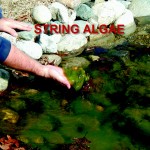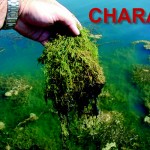![]() Pond Weeds and plants can be good and bad for the pond and it’s life cycle. But are they really weeds or plants that have taken over your liquid assets? Certain plants can be beneficial for the pond Eco system while others can be a real pain to manage or get rid of and some are invasive species, ( more about invasive at the bottom).
Pond Weeds and plants can be good and bad for the pond and it’s life cycle. But are they really weeds or plants that have taken over your liquid assets? Certain plants can be beneficial for the pond Eco system while others can be a real pain to manage or get rid of and some are invasive species, ( more about invasive at the bottom).
The good and bad about pond weeds and wanted plant is they are part of the cycle that helps to reduce the life expectancy of the pond. Let’s take a look at the four seasons. Starting with January we know that ice and snow have covered the pond, which is actually smothering the pond in a sense that no sunlight can get in, no toxic gasses can escape and any plant life that was in the pond is dying, decaying and creating those toxic gasses.
The Good part about pond weeds is when they are in bloom or growing which help provide some oxygen, absorb nutrients and provide habitat for the fish, wildlife and insects.
Moving into spring we see those plants are brown and slowly decaying, this process takes time to completely decay but during this time new growth is already begun where the plant has died. Once the plants are decayed so tot speak they become Muck and nutrients for this years growth and next year. Plus the slow filling in process of the dying pond.
Summer finally gets here and the weeds / plants are in bloom, looking good and the small fish have a place to hide from the predator fish and grow. If the plants are flowering type like the pickerel then the pollinating insects are thriving as well.
Now we come to the fall season, everything is starting to turn a little brown, the blooms are not as brilliant and the air and water temps are dropping. What happens next is the set up for next years muck, nutrient loading and more toxic gasses. Once Fall has changed to winter and the pond is covered again.
To help save the pond, cut these plants/ pond weeds out of the pond. This includes the submerged and shoreline pond![]() weeds and plants and remove them from the pond. This way we have taken the the mass of plants out that will become Muck, nutrients and toxic gasses out of the pond.
weeds and plants and remove them from the pond. This way we have taken the the mass of plants out that will become Muck, nutrients and toxic gasses out of the pond.
Getting these weeds out of the pond can be a lot of work but well worth the effort for the ponds sake. One option is the Pond Rake and Weed cutter, cut the weeds and rake them out. Next we have a semi submersible weed cutter used from shore to cut items like cattails, pickerel and shoreline submerged weeds which does not fling the clippings into the pond like typical weed whackers. In the open water we have our Lake Mower, 48″ width of cut up to 7′ deep.
For shore line weeds and submerged use the contact page and let us know the pond address and type of weed to be removed, we’ll get a quote out to you and work with you to help save your pond.
Erie, PA local pond owners we are starting a new program where you can rent the Pond Rake and Weed Cutter weekly,. Contact Us Today to get on the list for rental.
If you are struggling with Muck, Water Clarity and Odors check out our Pond Supplies.
As mentioned above about the invasive species we have a download for the Guide plus the aeration report and types on pond management via email, check out our Pond Aeration 101 page for details.


I have about a 3/4 acre pond.Very Very clean and swimable. It also has alot of stunted bass 10 years old and only 8-10 inches. I have one row of weed on the opposite bank. My fatherinlaw insists this is what is stunting my fish. do you agree?
If the pond is clean, very clean like being able to see more than 18″ in depth the water may not have enough micro organisms to support the food chain.
Starting with, example zooplankton then up the food chain to minnows and small fry which in turn feed the large fish. It is possible the feeder fish like the blue gill are too large now for the bass to consume or they are not spawning. The weeds should actually help with the population giving a place for the feeder fish to hide and a place for the predator fish to ambush from. There are times that weeds in a pond can become a problem like if the entire pond is covered, then the fish could be stunted since they are able to hide well and the predators can’t find the feeder fish.
Here is an article about Fish Habitat . Habitat can be as simple as stacking a 4-6 pallet on top of each other, tie them together and sink them with cement blocks. Place them in a triangle 3-5′ apart.
Hope this helps
Darrell